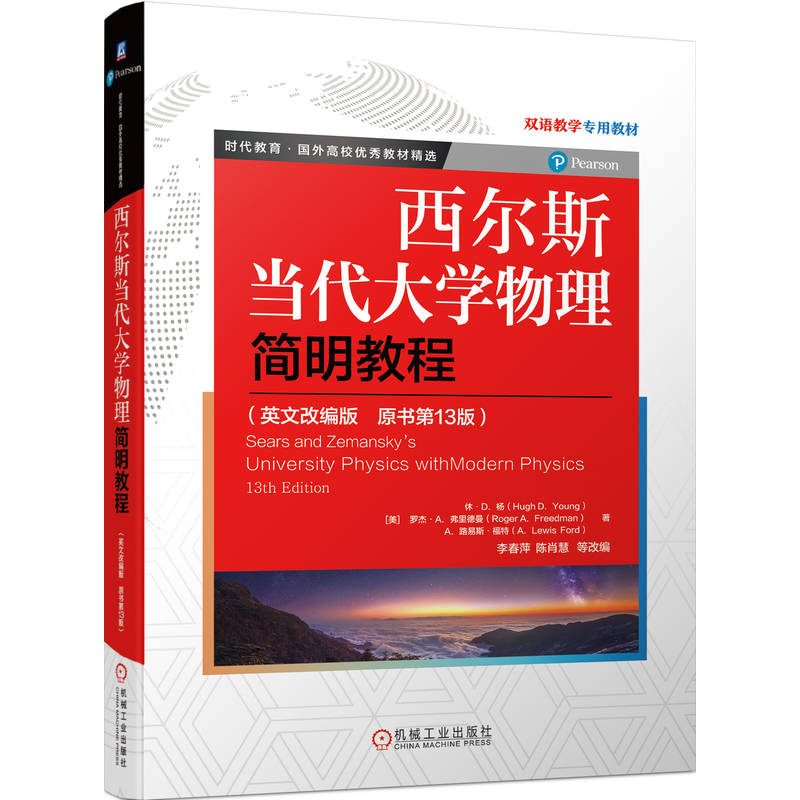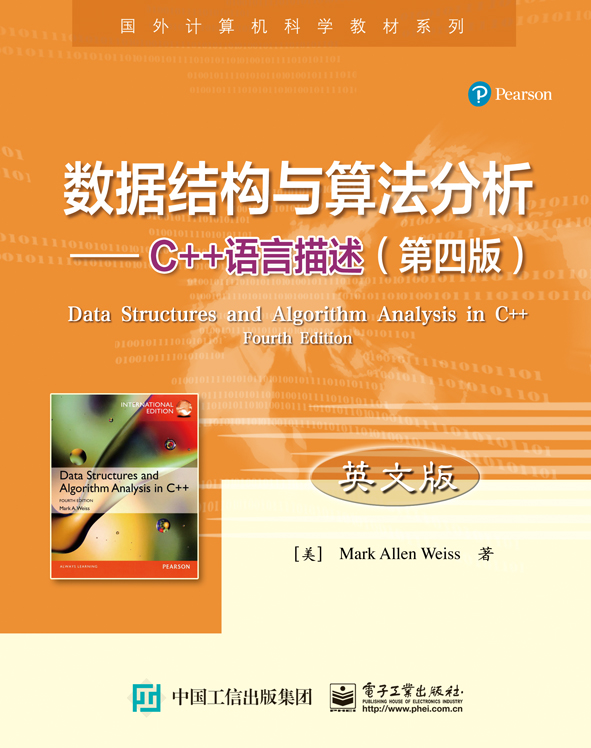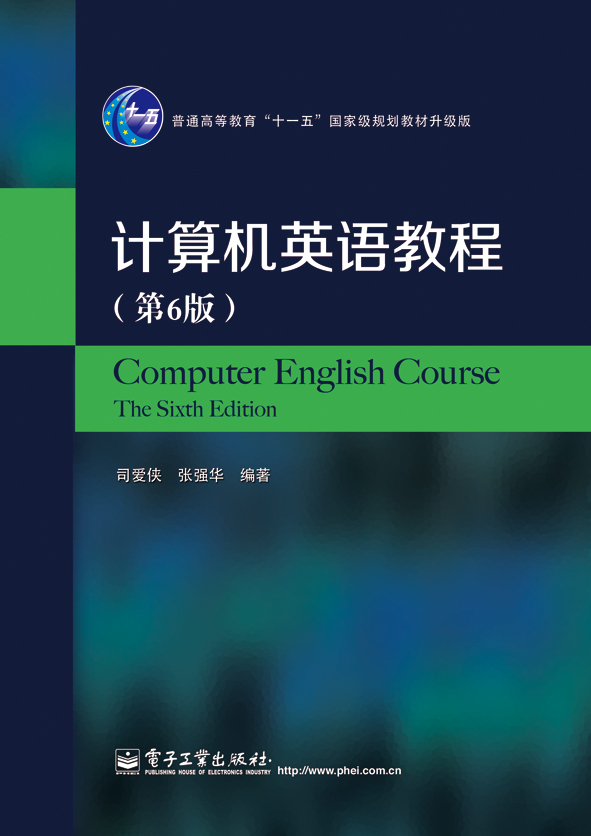西尔斯当代大学物理简明教程(英文改编版 原书第13版) / 时代教育·国外高校优秀教材精选
定价:¥138.00
作者: [美]休·D.杨等
出版时间:2023-10
最新印次日期:2023-10
出版社:机械工业出版社
试读
- 机械工业出版社
- 9787111697121
- 1-1
- 503602
- 42262058-3
- 平装
- 16开
- 2023-10
- 1167
- 公共基础课
- 公共基础课
- 大学物理
- 本科
内容简介
本书基于SEARS AND ZEMANSKY’S UNIVERSITY PHYSICS WITH MODERN PHYSICS,13E(《西尔斯当代大学物理》原书第13版),参照教育部高等学校物理基础课程教学指导分委员会制定的《理工科类大学物理课程教学基本要求》(2010年版),依据我国大学生的学习基础和教学大纲的知识点要求改编。本书涵盖了上述教学基本要求中的所有A类知识点,主要内容有力学、热学、电磁学、波动光学、相对论和量子物理。本书的特点是,在改编过程中对内容和习题进行了精选,不仅完全继承了原书的特色,还在行文上完全保留了原版教材原汁原味的表述,其内容和阅读量更适合中国理工科类相关专业作为双语教学的教材,同时可供社会读者阅读。
目录
前言
1 VECTORS1
1.1 Vectors and Vector Addition1
1.2 Components of Vectors3
1.3 Unit Vectors4
1.4 Products of Vectors5
SUMMARY7
EXERCISES8
2 MOTION9
2.1 Position and Velocity Vectors9
2.2 The Acceleration Vector12
2.3 Motion with Constant Acceleration14
2.4 Velocity and Position by Integration16
2.5 Projectile Motion and Motion in a Circle18
2.6 Relative Velocity21
SUMMARY24
EXERCISES26
3 NEWTON’S LAWS OF MOTION27
3.1 Force and Interactions27
3.2 Newton’s Law28
3.3 Mass and Weight30
3.4 Free-Body Diagrams32
SUMMARY33
EXERCISES34
4 APPLYING NEWTON’S LAWS35
4.1 Using Newton’s Laws35
4.2 Dynamics of Circular Motion39
4.3 The Fundamental Forces of Nature41
SUMMARY43
EXERCISES44
5 WORK AND KINETIC ENERGY45
5.1 Work45
5.2 Work and Energy with Varying Forces48
5.3 Power52
SUMMARY54
EXERCISES55
6 POTENTIAL ENERGY AND ENERGY
CONSERVATION57
6.1 Gravitational Potential Energy 57
6.2 Elastic Potential Energy62
6.3 Conservative and Nonconservative Forces64
6.4 Force and Potential Energy66
6.5 Energy Diagrams69
6.6 The Motion of Satellites70
SUMMARY73
EXERCISES75
7 MOMENTUM, IMPULSE, AND
COLLISIONS77
7.1 Momentum and Impulse77
7.2 Conservation of Momentum81
7.3 Momentum Conservation and Collisions83
7.4 Elastic Collisions87
7.5 Center of Mass89
7.6 Rocket Propulsion93
SUMMARY95
EXERCISES97
8 ROTATION OF RIGID BODIES99
8.1 Angular Velocity and Acceleration99
8.2 Relating Linear and Angular Kinematics103
8.3 Energy in Rotational Motion106
8.4 Parallel-Axis Theorem111
8.5 Moment-of-Inertia Calculations112
SUMMARY114
EXERCISES115
9 DYNAMICS OF ROTATIONAL
MOTION117
9.1 Torque117
9.2 Torque and Angular Acceleration for a
Rigid Body119
9.3 Work and Power in Rotational Motion122
9.4 Angular Momentum124
9.5 Conservation of Angular Momentum127
9.6 Gyroscopes and Precession130
SUMMARY133
EXERCISES134
10 PERIODIC MOTION137
10.1 Describing Oscillation137
10.2 Simple Harmonic Motion139
10.3 Energy in Simple Harmonic Motion146
10.4 Vertical SHM148
10.5 The Simple Pendulum150
10.6 The Physical Pendulum151
10.7 Damped Oscillations152
10.8 Forced Oscillations and Resonance153
SUMMARY155
EXERCISES156
11 MECHANICAL WAVES159
11.1 Types of Mechanical Waves159
11.2 Periodic Waves160
11.3 Mathematical Description of a Wave163
11.4 Speed of a Transverse Wave168
11.5 Energy in Wave Motion169
11.6 Wave Interference, Boundary Conditions, and Superposition171
11.7 Standing Waves on a String174
11.8 Normal Modes of a String178
11.9 Sound Wates and Sound Intensity180
11.10 The Doppler Effect181
11.11 Shock Waves184
SUMMARY185
EXERCISES187
12 TEMPERATURE, HEAT AND THERMAL
PROPERTIES OF MATTER189
12.1 Temperature and Thermal Equilibrium189
12.2 Thermometers and Temperature Scales190
12.3 Gas Thermometers and the Kelvin Scale190
12.4 Quantity of Heat190
12.5 Equations of State192
12.6 Molecular Properties of Matter193
12.7 Kinetic-Molecular Model of an Ideal Gas194
12.8 Heat Capacities199
12.9 Molecular Speeds201
SUMMARY203
EXERCISES204
13 THE FIRST LAW OF THERMODY
NAMICS207
13.1 Thermodynamic Systems207
13.2 Work Done During Volume Changes208
13.3 Paths Between Thermodynamic States209
13.4 Internal Energy and the First Law
of Thermodynamics210
13.5 Kinds of Thermodynamic Processes214
13.6 Internal Energy of an Ideal Gas215
13.7 Heat Capacities of an Ideal Gas216
13.8 Adiabatic Processes for an Ideal Gas219
SUMMARY221
EXERCISES222
14 THE SECOND LAW OF
THERMODYNAMICS225
14.1 Directions of Thermodynamic Processes225
14.2 Heat Engines226
14.3 Internal-Combustion Engines228
14.4 Refrigerators230
14.5 The Second Law of Thermodynamics232
14.6 The Carnot Cycle233
14.7 Entropy236
14.8 Microscopic Interpretation of Entropy240
SUMMARY241
EXERCISES243
15 ELECTRIC CHARGE AND ELECTRIC
FIELD245
15.1 Electric Charge245
15.2 Conductors, Insulators, and
Induced Charges246
15.3 Coulomb’s Law247
15.4 Electric Field and Calculations248
15.5 Electric Field Lines254
15.6 Electric Dipoles255
SUMMARY256
EXERCISES257
16 GAUSS’S LAW261
16.1 Electric Flux and Calculations261
16.2 Gauss’s Law and Applications264
16.3 Charges on Conductors268
SUMMARY269
EXERCISES270
17 ELECTRIC POTENTIAL273
17.1 Electric Potential Energy273
17.2 Electric Potential and Calculation275
17.3 Equipotential Surfaces279
17.4 Potential Gradient281
SUMMARY283
EXERCISES284
18 CAPACITANCE AND DIELECTRICS287
18.1 Capacitors, Capacitance and Combination287
18.2 Energy Storage in Capacitors and
Electric-Field Energy292
18.3 Dielectrics294
18.4 Molecular Model of Induced Charge297
18.5 Gauss’s Law in Dielectrics298
SUMMARY299
EXERCISES300
19 MAGNETIC FIELD AND MAGNETIC
FORCES303
19.1 Magnetism and Magnetic Field303
19.2 Magnetic Field Lines and Magnetic Flux306
19.3 Motion of Charged Particles in a
Magnetic Field307
19.4 Applications of Motion of Charged
Particles and Hall Effect310
19.5 Magnetic Force on a Current-Carrying
Conductor315
19.6 Force and Torque on a Current Loop318
SUMMARY322
EXERCISES324
20 SOURCES OF MAGNETIC FIELD329
20.1 Magnetic Field of a Moving Charge329
20.2 The Biot-Savart Law and Application331
20.3 Ampere’s Law and Application339
20.4 Magnetic Materials344
SUMMARY349
EXERCISES351
21 ELECTROMAGNETIC INDUCTION355
21.1 Induction Experiments355
21.2 Electromotiv Force357
21.3 Faraday’s Law358
21.4 Lenz’s Law363
21.5 Motional Electromotive Force364
21.6 Induced Electric Fields and Eddy
Currents366
21.7 Displacement Current and
Maxwell’s Equations370
21.8 Maxwell’s Equations and
Electromagnetic Waves375
21.9 Plane Electromagnetic Waves and the
Speed of Light377
21.10 Electromagnetic Energy Flow and
the Poynting Vector381
SUMMARY383
EXERCISES385
22 INDUCTANCE389
22.1 Mutual Inductance389
22.2 Self-Inductance and Inductors392
22.3 Magnetic-Field Energy395
SUMMARY398
EXERCISES399
23 THE NATURE AND PROPAGATION
OF LIGHT401
23.1 The Nature of Light401
23.2 Reflection and Refraction402
23.3 Total Internal Reflection405
SUMMARY407
EXERCISES408
24 INTERFERENCE409
24.1 Interference and Coherent Sources409
24.2 Two-Source Interference of Light410
24.3 Intensity in Interference Patterns413
24.4 Interference in Thin Films415
24.5 The Michelson Interferometer420
SUMMARY421
EXERCISES422
25 DIFFRACTION425
25.1 Fresnel and Fraunhofer Diffraction425
25.2 Diffraction from a Single Slit427
25.3 Intensity in the Single-Slit Pattern430
25.4 Multiple Slits433
25.5 The Diffraction Grating436
25.6 X-Ray Diffraction438
25.7 Circular Apertures and Resolving Power440
SUMMARY442
EXERCISES444
26 POLARIZATION447
26.1 Linear Polarization447
26.2 Circular and Elliptical Polarization447
26.3 Polarizing Filters449
26.4 Polarization by Reflection452
SUMMARY454
EXERCISES454
27 RELATIVITY455
27.1 Invariance of Physical Laws455
27.2 Relativity of Simultaneity458
27.3 Relativity of Time Intervals460
27.4 Relativity of Length463
27.5 The Lorentz Transformations465
27.6 Relativistic Momentum466
27.7 Relativistic Energy467
SUMMARY468
EXERCISES470
28 PHOTONS: LIGHT WAVES BEHAVING
AS PARTICLES471
28.1 The Photoelectric Effect471
28.2 Light Scattered as Photons: Compton
Scattering and Pair Production475
28.3 Wave-Particle Duality, Probability,
and Uncertainty478
SUMMARY480
EXERCISES481
29 PARTICLES BEHAVING
AS WAVES483
29.1 Electron Waves483
29.2 The Nuclear Atom and Atomic Spectra484
29.3 Energy Levels and the Bohr Model of
the Atom487
29.4 Continuous Spectra and Blackbody
Radiation491
SUMMARY493
EXERCISES495
30 QUANTUM MECHANICS497
30.1 Wave Functions and the One-
Dimensional Schrödinger Equation497
30.2 Particle in a Box501
30.3 Potential Barriers and Tunneling505
30.4 The Hydrogen Atom506
SUMMARY511
EXERCISES513
APPENDIX515
APPENDIX A515
APPENDIX B517
APPENDIX C518
ANSWERS TO EXERCISES519
1 VECTORS1
1.1 Vectors and Vector Addition1
1.2 Components of Vectors3
1.3 Unit Vectors4
1.4 Products of Vectors5
SUMMARY7
EXERCISES8
2 MOTION9
2.1 Position and Velocity Vectors9
2.2 The Acceleration Vector12
2.3 Motion with Constant Acceleration14
2.4 Velocity and Position by Integration16
2.5 Projectile Motion and Motion in a Circle18
2.6 Relative Velocity21
SUMMARY24
EXERCISES26
3 NEWTON’S LAWS OF MOTION27
3.1 Force and Interactions27
3.2 Newton’s Law28
3.3 Mass and Weight30
3.4 Free-Body Diagrams32
SUMMARY33
EXERCISES34
4 APPLYING NEWTON’S LAWS35
4.1 Using Newton’s Laws35
4.2 Dynamics of Circular Motion39
4.3 The Fundamental Forces of Nature41
SUMMARY43
EXERCISES44
5 WORK AND KINETIC ENERGY45
5.1 Work45
5.2 Work and Energy with Varying Forces48
5.3 Power52
SUMMARY54
EXERCISES55
6 POTENTIAL ENERGY AND ENERGY
CONSERVATION57
6.1 Gravitational Potential Energy 57
6.2 Elastic Potential Energy62
6.3 Conservative and Nonconservative Forces64
6.4 Force and Potential Energy66
6.5 Energy Diagrams69
6.6 The Motion of Satellites70
SUMMARY73
EXERCISES75
7 MOMENTUM, IMPULSE, AND
COLLISIONS77
7.1 Momentum and Impulse77
7.2 Conservation of Momentum81
7.3 Momentum Conservation and Collisions83
7.4 Elastic Collisions87
7.5 Center of Mass89
7.6 Rocket Propulsion93
SUMMARY95
EXERCISES97
8 ROTATION OF RIGID BODIES99
8.1 Angular Velocity and Acceleration99
8.2 Relating Linear and Angular Kinematics103
8.3 Energy in Rotational Motion106
8.4 Parallel-Axis Theorem111
8.5 Moment-of-Inertia Calculations112
SUMMARY114
EXERCISES115
9 DYNAMICS OF ROTATIONAL
MOTION117
9.1 Torque117
9.2 Torque and Angular Acceleration for a
Rigid Body119
9.3 Work and Power in Rotational Motion122
9.4 Angular Momentum124
9.5 Conservation of Angular Momentum127
9.6 Gyroscopes and Precession130
SUMMARY133
EXERCISES134
10 PERIODIC MOTION137
10.1 Describing Oscillation137
10.2 Simple Harmonic Motion139
10.3 Energy in Simple Harmonic Motion146
10.4 Vertical SHM148
10.5 The Simple Pendulum150
10.6 The Physical Pendulum151
10.7 Damped Oscillations152
10.8 Forced Oscillations and Resonance153
SUMMARY155
EXERCISES156
11 MECHANICAL WAVES159
11.1 Types of Mechanical Waves159
11.2 Periodic Waves160
11.3 Mathematical Description of a Wave163
11.4 Speed of a Transverse Wave168
11.5 Energy in Wave Motion169
11.6 Wave Interference, Boundary Conditions, and Superposition171
11.7 Standing Waves on a String174
11.8 Normal Modes of a String178
11.9 Sound Wates and Sound Intensity180
11.10 The Doppler Effect181
11.11 Shock Waves184
SUMMARY185
EXERCISES187
12 TEMPERATURE, HEAT AND THERMAL
PROPERTIES OF MATTER189
12.1 Temperature and Thermal Equilibrium189
12.2 Thermometers and Temperature Scales190
12.3 Gas Thermometers and the Kelvin Scale190
12.4 Quantity of Heat190
12.5 Equations of State192
12.6 Molecular Properties of Matter193
12.7 Kinetic-Molecular Model of an Ideal Gas194
12.8 Heat Capacities199
12.9 Molecular Speeds201
SUMMARY203
EXERCISES204
13 THE FIRST LAW OF THERMODY
NAMICS207
13.1 Thermodynamic Systems207
13.2 Work Done During Volume Changes208
13.3 Paths Between Thermodynamic States209
13.4 Internal Energy and the First Law
of Thermodynamics210
13.5 Kinds of Thermodynamic Processes214
13.6 Internal Energy of an Ideal Gas215
13.7 Heat Capacities of an Ideal Gas216
13.8 Adiabatic Processes for an Ideal Gas219
SUMMARY221
EXERCISES222
14 THE SECOND LAW OF
THERMODYNAMICS225
14.1 Directions of Thermodynamic Processes225
14.2 Heat Engines226
14.3 Internal-Combustion Engines228
14.4 Refrigerators230
14.5 The Second Law of Thermodynamics232
14.6 The Carnot Cycle233
14.7 Entropy236
14.8 Microscopic Interpretation of Entropy240
SUMMARY241
EXERCISES243
15 ELECTRIC CHARGE AND ELECTRIC
FIELD245
15.1 Electric Charge245
15.2 Conductors, Insulators, and
Induced Charges246
15.3 Coulomb’s Law247
15.4 Electric Field and Calculations248
15.5 Electric Field Lines254
15.6 Electric Dipoles255
SUMMARY256
EXERCISES257
16 GAUSS’S LAW261
16.1 Electric Flux and Calculations261
16.2 Gauss’s Law and Applications264
16.3 Charges on Conductors268
SUMMARY269
EXERCISES270
17 ELECTRIC POTENTIAL273
17.1 Electric Potential Energy273
17.2 Electric Potential and Calculation275
17.3 Equipotential Surfaces279
17.4 Potential Gradient281
SUMMARY283
EXERCISES284
18 CAPACITANCE AND DIELECTRICS287
18.1 Capacitors, Capacitance and Combination287
18.2 Energy Storage in Capacitors and
Electric-Field Energy292
18.3 Dielectrics294
18.4 Molecular Model of Induced Charge297
18.5 Gauss’s Law in Dielectrics298
SUMMARY299
EXERCISES300
19 MAGNETIC FIELD AND MAGNETIC
FORCES303
19.1 Magnetism and Magnetic Field303
19.2 Magnetic Field Lines and Magnetic Flux306
19.3 Motion of Charged Particles in a
Magnetic Field307
19.4 Applications of Motion of Charged
Particles and Hall Effect310
19.5 Magnetic Force on a Current-Carrying
Conductor315
19.6 Force and Torque on a Current Loop318
SUMMARY322
EXERCISES324
20 SOURCES OF MAGNETIC FIELD329
20.1 Magnetic Field of a Moving Charge329
20.2 The Biot-Savart Law and Application331
20.3 Ampere’s Law and Application339
20.4 Magnetic Materials344
SUMMARY349
EXERCISES351
21 ELECTROMAGNETIC INDUCTION355
21.1 Induction Experiments355
21.2 Electromotiv Force357
21.3 Faraday’s Law358
21.4 Lenz’s Law363
21.5 Motional Electromotive Force364
21.6 Induced Electric Fields and Eddy
Currents366
21.7 Displacement Current and
Maxwell’s Equations370
21.8 Maxwell’s Equations and
Electromagnetic Waves375
21.9 Plane Electromagnetic Waves and the
Speed of Light377
21.10 Electromagnetic Energy Flow and
the Poynting Vector381
SUMMARY383
EXERCISES385
22 INDUCTANCE389
22.1 Mutual Inductance389
22.2 Self-Inductance and Inductors392
22.3 Magnetic-Field Energy395
SUMMARY398
EXERCISES399
23 THE NATURE AND PROPAGATION
OF LIGHT401
23.1 The Nature of Light401
23.2 Reflection and Refraction402
23.3 Total Internal Reflection405
SUMMARY407
EXERCISES408
24 INTERFERENCE409
24.1 Interference and Coherent Sources409
24.2 Two-Source Interference of Light410
24.3 Intensity in Interference Patterns413
24.4 Interference in Thin Films415
24.5 The Michelson Interferometer420
SUMMARY421
EXERCISES422
25 DIFFRACTION425
25.1 Fresnel and Fraunhofer Diffraction425
25.2 Diffraction from a Single Slit427
25.3 Intensity in the Single-Slit Pattern430
25.4 Multiple Slits433
25.5 The Diffraction Grating436
25.6 X-Ray Diffraction438
25.7 Circular Apertures and Resolving Power440
SUMMARY442
EXERCISES444
26 POLARIZATION447
26.1 Linear Polarization447
26.2 Circular and Elliptical Polarization447
26.3 Polarizing Filters449
26.4 Polarization by Reflection452
SUMMARY454
EXERCISES454
27 RELATIVITY455
27.1 Invariance of Physical Laws455
27.2 Relativity of Simultaneity458
27.3 Relativity of Time Intervals460
27.4 Relativity of Length463
27.5 The Lorentz Transformations465
27.6 Relativistic Momentum466
27.7 Relativistic Energy467
SUMMARY468
EXERCISES470
28 PHOTONS: LIGHT WAVES BEHAVING
AS PARTICLES471
28.1 The Photoelectric Effect471
28.2 Light Scattered as Photons: Compton
Scattering and Pair Production475
28.3 Wave-Particle Duality, Probability,
and Uncertainty478
SUMMARY480
EXERCISES481
29 PARTICLES BEHAVING
AS WAVES483
29.1 Electron Waves483
29.2 The Nuclear Atom and Atomic Spectra484
29.3 Energy Levels and the Bohr Model of
the Atom487
29.4 Continuous Spectra and Blackbody
Radiation491
SUMMARY493
EXERCISES495
30 QUANTUM MECHANICS497
30.1 Wave Functions and the One-
Dimensional Schrödinger Equation497
30.2 Particle in a Box501
30.3 Potential Barriers and Tunneling505
30.4 The Hydrogen Atom506
SUMMARY511
EXERCISES513
APPENDIX515
APPENDIX A515
APPENDIX B517
APPENDIX C518
ANSWERS TO EXERCISES519










